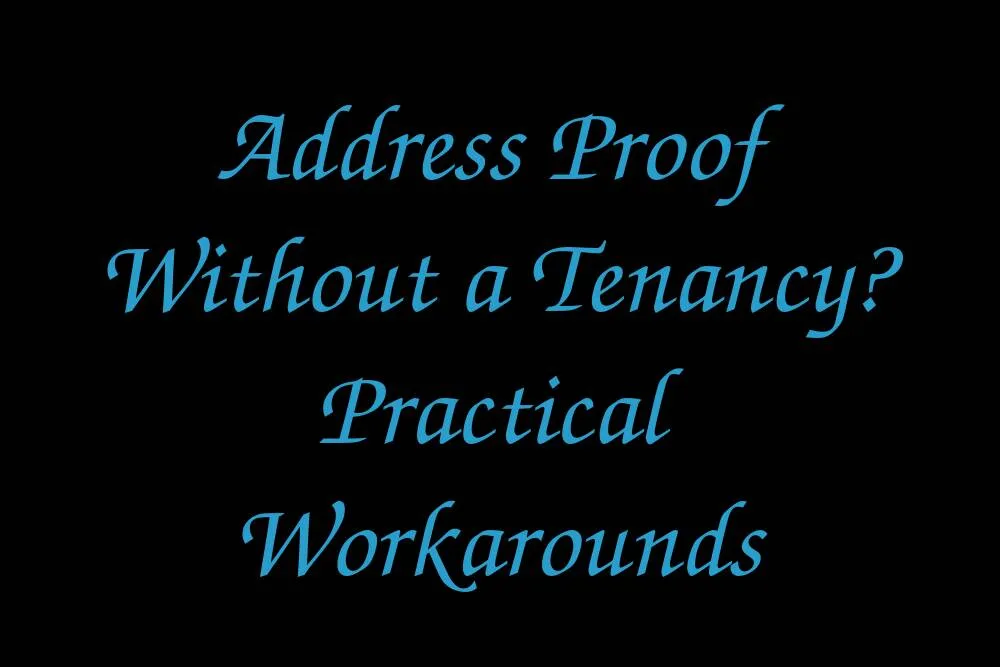Address Proof Without a Tenancy? Practical Workarounds (Singapore)
If you’re opening a bank account in Singapore but don’t have a tenancy agreement in your name, you still have several clean, compliant ways to provide proof of residential address. Banks in Singapore verify customer information to meet anti-money-laundering rules, and “proof of address” is part of that process. Requirements can differ slightly by bank, but the strategies below consistently work when applied correctly.
1) Use Singpass MyInfo so the bank reads your government-verified address
Most major banks let Singapore Citizens and PRs open accounts using Singpass MyInfo. When you open an account with MyInfo, your personal particulars—including your residential address on record—are retrieved directly from government sources, so there’s usually no need to upload a separate address document. The key is to make sure your address in MyInfo is up to date before you apply.
Tip: If your address has changed, update it first, then apply. NRIC holders are required to report a change of residential address within 28 days, and the ICA e-service makes this straightforward. Once updated, your new address will flow into services that rely on MyInfo.
2) Lean on documents banks explicitly accept (no lease needed)
When you’re not using MyInfo—or when a bank asks for a document—choose from items the banks clearly list as acceptable. DBS, for example, accepts a recent (issued within the last 3 months) local utility bill, telecommunication bill, or a local bank/credit card statement that shows your name and address. DBS also states that tenancy agreements and “care-of”/P.O. Box addresses are not acceptable as proof of residential address.
UOB’s guidance for changing address in-branch likewise shows banks commonly accept NRIC, utility or telephone bills, tax assessment letters, or non-UOB bank statements (often within 3–6 months, depending on the task).
3) Practical workarounds if bills aren’t in your name
- Update your address with ICA, then apply via MyInfo: This is the simplest route for NRIC holders. After you complete the change of address, apply with a bank that supports MyInfo so the bank reads your updated address directly.
- Get a postpaid mobile/broadband plan in your name: A telco bill issued to you at your residence is widely accepted (often within 3 months). This is a fast way to create a qualifying document when you don’t have utilities in your name.
- Ask your bank which official letters they accept: Some tasks accept government letters (e.g., tax assessment) or bank/credit card statements as proof—useful if you receive mail at home but don’t hold the lease.
- Students and newcomers: For foreigners, DBS lists alternatives such as a certification letter from school, letter of employment, certain In-Principle Approval (IPA) letters from MOM/ICA, or local telco/utility/bank statements (typically dated within 3 months).
4) Opening your account before you settle a local address
Some banks allow you to use an overseas residential address at the point of application and then ask you to update to a Singapore address in their app once available. This is handy if you’ve just arrived and don’t yet have your own tenancy.
5) What not to use
As noted above, banks commonly do not accept P.O. Box/care-of addresses, and in many cases they do not accept tenancy agreements as address proof. Always choose a bank-listed document to avoid delays.
6) Typical date windows (so your document doesn’t get rejected)
- Banking address proof for onboarding: often within the last 3 months (DBS example).
- Some profile updates at branches: up to 6 months for certain document types (UOB example).
Checklist: the smoothest path without a tenancy
- Check and update your NRIC/Singpass address via ICA e-services.
- Apply with a bank that supports MyInfo so address is pulled automatically.
- If a document is requested, use a recent telco/utility bill, local bank/credit card statement, or (where allowed) a tax assessment or official letter that shows your name and residential address.
- For students or EP/IPA holders, use school/employer letters or accepted IPA documents if listed by your bank.
Friendly reminder: Acceptable documents and date windows can vary slightly by bank and by the specific task (new account vs. updating details). Always check the bank’s latest guidance before you submit anything.
Important: This page is for general information only. For any decision that could affect your banking or immigration status, verify requirements directly on official websites or with the bank before proceeding.
Sources (official, topic-specific pages)
- DBS — Documents Required for Account Opening (proof of address, MyInfo notes, what’s accepted / not accepted)
- UOB — Change Your Contact Details and Mailing Address (examples of acceptable proofs such as tax assessment, bills)
- GovTech — MyInfo Overview (verified data sharing; document-free onboarding)
- OCBC — Digital Account Opening with MyInfo (no document upload)
- ICA — Change of Residential Address on Identity Card (update requirements and process)
- MAS — AML/CFT requirements reference (Notice 626 mention)
- UOB — Apply Online with MyInfo (document-free note)
- DBS/NUS — Account Opening Guide (uses MyInfo; when extra address docs are needed)


